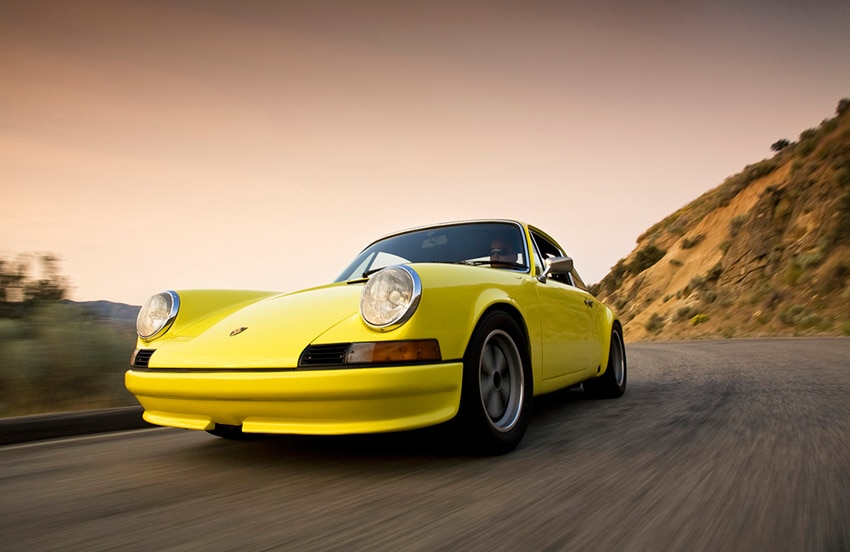Here’s a look at some of the things that make your 1964-1989 Porsche 911 handle better:
Weight / Center of Gravity
Nothing has more potential effect on how your 911 behaves under weight transfer than the weight of the car and its center of gravity. Anything you can do to take weight off the unsprung parts of the car, the top of the car, and the back of the car will go a long way towards making it more responsive and agile. Lowering the car even slightly makes big differences in its cornering capabilities.
A lower and lighter car accelerates quicker, brakes quicker, and can carry more speed through a corner than a higher and heavier car. Also, with a lighter car you may not feel the need for additional horsepower – which would probably require a heavier engine, transmission, suspension, brakes, wheels and tires, etc.
Tires / Suspension
Next to weight, tires and suspension are the best areas to look at for upgrading your 911’s handling. There are many relatively inexpensive maintenance items that can stiffen the car a bit and improve its response under hard transitions – without making its street ride too harsh:
- Modern high performance tires: New tires can make huge improvements in handling. Make sure that your tire pressures are frequently checked and adjusted correctly.
- Alignment and weight balance: These adjustments are critical for optimizing your Porsche’s footprint – based on your goals and performed by a shop specializing in 911s.
- Shocks: Replacing worn-out shocks could be the only suspension upgrade your car needs. Konis work well for torsion bar suspensions, as do Bilsteins. Try regular Bilsteins in front and heavy duty in the rear for a comfortable yet firm street ride on the heavier SC and Carrera 911s.
- Springs: Upgraded torsion bars go hand-in-hand with upgraded shocks. Sizes recommended include 21mm in front and 26mm in the rear. This combo works well for street, canyon carving and the occasional autocross. 22/28mm torsion bars (or higher) are better for track work, along with custom or double adjustable shocks.
- Sway Bars: Factory ‘S’ 15mm front and rear anti-roll bars are a good start if not present on your early 911. For a flatter stance in the corners, consider a factory front 18mm through the body (from a ‘76-77 Turbo) and a 18mm factory rear sway bar (from a ‘74 Carrera). Aftermarket adjustable shocks are another option.
- Bushings: Simply replacing old rubber bushings with non-metallic modern materials can make a world of difference in your car’s responsiveness and comfort.
Don’t forget to regularly check wheel bearings, CV boots, tie rods, and bushings. Consider staying away from monoball bushings if you want the car to be quiet and comfortable on the street. A front strut brace is not necessary, but it can make a difference in turn-in response with Targas.
The challenge in modifying the suspension of your torsion bar 911 is not to make it too stiff. These relatively lightweight rear engine/rear wheel drive cars need some compliance to handle their best, and our roads are not getting any smoother. The main thing is to keep having fun safely in your 911!
Stock Suspension Specs for Torsion Bar Porsche 911s
Torsion Bars (1964-1989):
- 19 Front: (1964-1985)
- Rear: 23 (1964-1980), 24 (1981-1985), 25 (1986-1989)
Sway / Anti-Roll Bars – Through the Body Style (1964-1973):
- 11 Front Only: 1968 L
- 13 Front Only: 1964-1966
- 15 Front Only: Stock 1973 (Optional 1967-1972 non-S)
- 15 Front and Rear: Stock 1967-1973 S (Optional others)
Article Copyright © 2016 Randy Wells. All Rights Reserved.

